#1894-1971
Explore tagged Tumblr posts
Text
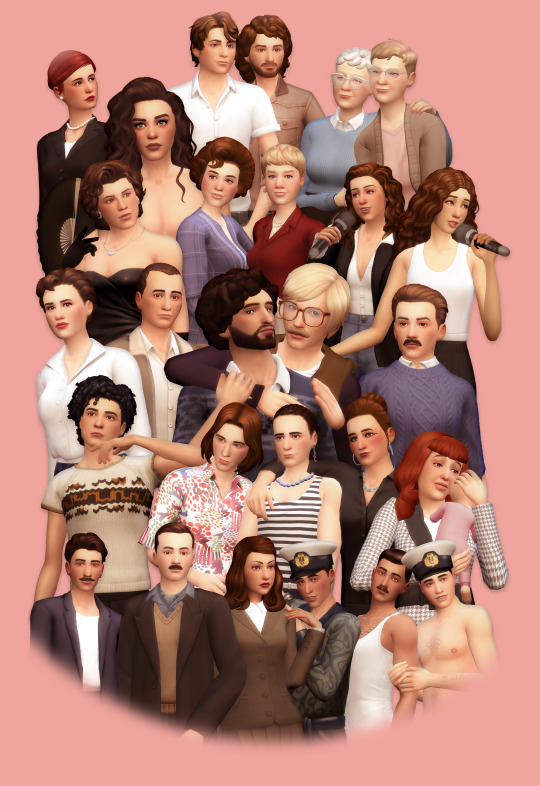
HAPPY PRIDE MONTH
As every year this is a good date to remember the daily struggle for the rights of the LBGT+ community. It is also a time to learn about the people who made it possible for us to identify ourselves as who we are today without fear of reprisals or being punished by the law. This month I got involved in the history of Argentina and its different movements for the fight for rights through the 20th century. Here I come to share some important figures, some more known than others, but obviously there are a lot that I have left out of this publication.

Sara Facio (1932-2024) & Maria Elena Walsh (1930-2011)
A couple of intellectual artists that would need a separate publication to go deeper into the subject. Sara is one of the greatest Latin American photographers who with her camera contributed to the creation of the most outstanding photographic heritage of the country. Maria Elena is a writer, singer and composer whose children's songs resonate to this day because they are much more profound than they seem and are still relevant today.

Salvadora Medina Onrubia (1894-1972)
She was a writer, militant anarchist, single mother and the first woman to run a newspaper in the country. She was the first Argentinean woman to dare to write about double sinners, lesbians and adulteresses. One of her most valued plays was Las descentradas, premiered in 1929. There, Salvadora honors her own contradictions, narrating women who question monogamous structures, marriage and the traditional family.
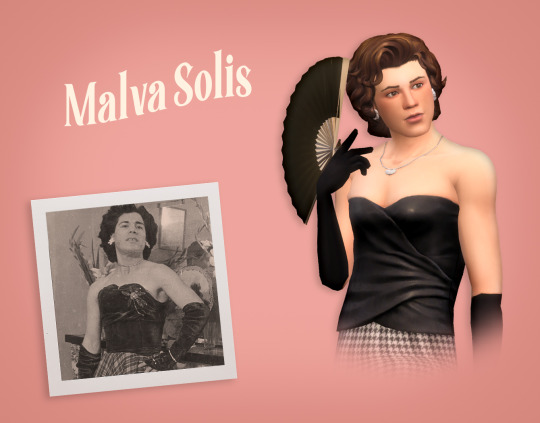
Malva Solis (1920-2015)
She was a transvestite writer who lived for 95 years when the life expectancy of this community in the country was under 40 years old. In 1951 founded the first trans organization on record, Maricas Unidas Argentinas. She has the oldest series of trans photographs in the country, dating from 1940 to 1980, when simply having those photographs at home was cause for being arrested. There is a documentary based on the photographs and conversations with her at her home called "Con Nombre de flor".
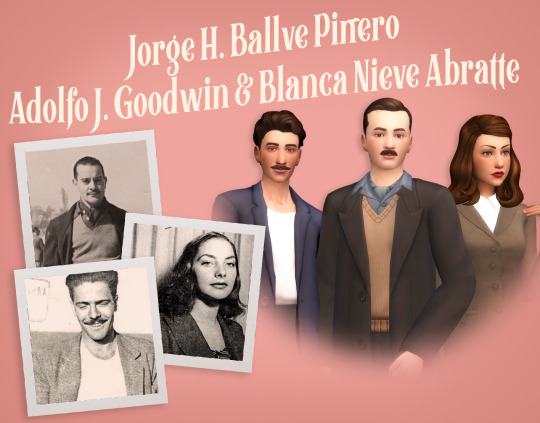
Jorge Horacio Ballve Piñero (1920-?)
Piñero was a young man from a well-to-do family of the Buenos Aires society at the beginning of the century. Together with his best friend Adolfo and Blanca, he organized gatherings in his apartment in Recoleta, and was a pioneer of male erotic photography. They mixed the privileged social class with workers, dishwashers, gas station workers, sailors and cadets from the Military College. These three characters were involved in a police case involving cadets from the military college, known as the Cadet Scandal. In the police archives remain captive the photographic collection, intended for pleasure and personal aesthetic enjoyment that tragically proved key to incriminate some friends who just wanted to have fun.
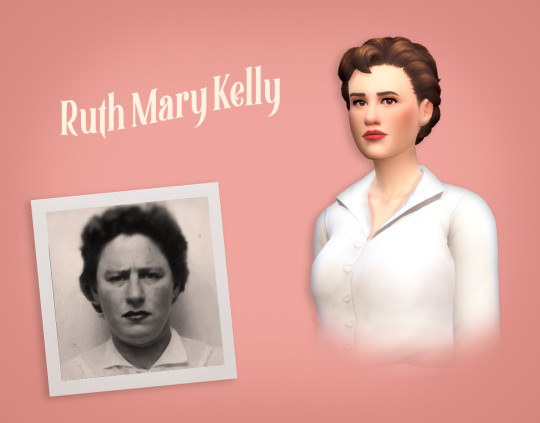
Ruth Mary Kelly (1925-1994)
She was a bisexual woman, who worked as a "Wohoo Worker". Founder of Grupo Safo in 1972, the first Argentine lesbian organization, and of the Frente de Liberación Homosexual (Homosexual Liberation Front). In 1972 she wrote Memorial de los Infiernos about her experiences as a "Wohoo" worker and bisexual, persecuted by the psychiatric-prison system.
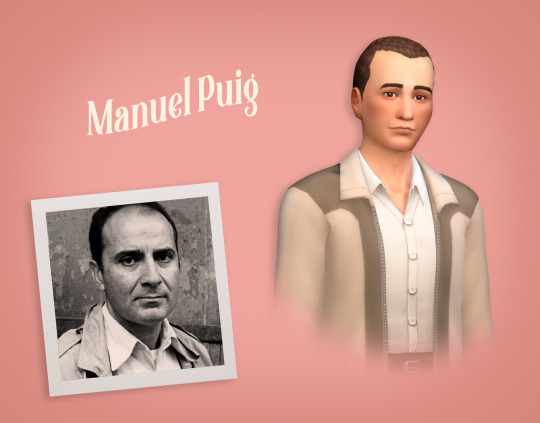
Manuel Puig (1932-1990)
He was an Argentine writer and LGBT+ activist, author of the novels Boquitas pintadas, El beso de la mujer araña (Considered one of the most recognized LGBT works in Latin America and one of the best works in Spanish of the 20th century) etc. He also fought against authoritarianism and machismo, and was one of the founders of the Homosexual Liberation Front in 1971, one of the first associations for the defense of LGBTQI+ rights.

Mariela Muñoz (1943-2017)
She was the first transsexual woman to be recognized by the state and given a female ID card on May 2, 1997. At the age of 16 she became independent, and it was then that she began caring for children, teenagers and single mothers. She cared for children who had been abandoned by their mothers, whom she loved and cared for. She raised, during her lifetime, 23 children and 30 grandchildren. In a dispute over the guardianship of 3 children in 1993, Argentina was confronted for the first time with the debate as to whether a transsexual person "could be a mother"

Carlos Jauregui (1957-1996) & Raul Soria
Carlos was a History professor and the founder of the Civil Association Gays for Civil Rights, organizer of the first Pride march in Buenos Aires and an essential figure for Argentine activism. In 1984, he broke with the schemes by appearing in the magazine Siete Días embracing the activist Raul Soria, a homosexual person assumed his sexuality in a public way for the first time. He believed that media visibility is fundamental for LGTB people. Leaving aside the fear and silence that other generations suffered for years. In 1985, Raul would present himself as the first gay candidate for congressman in the country.

Roberto Jauregui (1960-1994)
Brother of Carlos, was a journalist, actor and the first activist for the rights of people with HIV in the country. In 1989 he exposed the inequality in access to treatment at that time due to the price of medication. He played a central role in marches, actions, talks and interviews to demand human rights for people living with the virus. A well-known phrase of his is "Showing one's face is not easy in a society that discriminates, censures and separates".

Cris Miró (1965-1999)
Cris was the first visible trans people that appeared in the media and broke with the "transvestite" paradigm. A dental student, she got involved in the artistic underworld and later studied classical dance, musical comedy and acting. Her career was meteoric: the popularity of revue theater catapulted her to the small screen where she became a sought-after figure in the most popular programs. On June 23rd, a series about his life inspired by his biography was released, available on Prime Video.

Alejandro Vannelli (1948-) y Ernesto Larresse (1950-)
They were the first couple in the province of Buenos Aires to get legally married on July 30, 2010 after the Equal Marriage Law was passed. They met in 1976 because of a triple A bomb in the theater where Larresse was performing with Nacha Guevara, then he joined the cast of Vannelli. At the beginning they did not like each other because of Vanelli's appearance as a wealthy young man and Larresse was the opposite, but opposites attracted and they were a couple for 34 years.
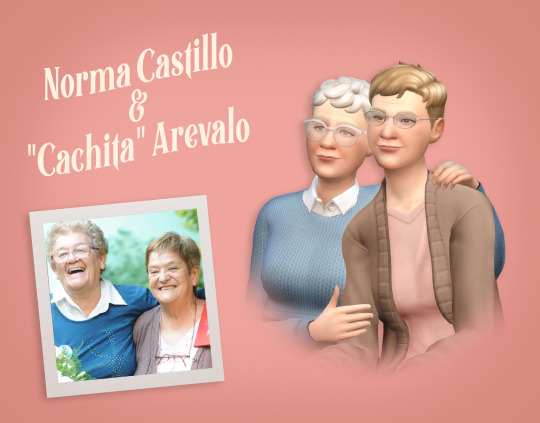
Norma Castillo (1943-) y Ramona "Cachita" Arévalo (1943-2018)
They were the of South America's first gay marriage on April 9, 2010. Norma and Ramona were married to two Colombians, who were cousins to each other. During the dictatorship they both went into exile in Colombia and there they fell in love and lived their romance clandestinely, until Cachita separated and Norma was widowed by her husband. They lived their love freely and even opened an LGBT discotheque in Colombia. In 1998 they returned to Argentina and began to work in sexual diversity organizations.

Feliciano Centurión 1962-1996)
He was a visual artist, a Paraguayan painter professionally trained in Argentina. He grew up in a home dominated by women, where he learned to sew and crochet. Inspired by queer aesthetics and folk art, he used to incorporate household textiles and references to the natural world. She handled kitsch art and languages not considered high art with a great deal of knowledge and sensitivity.

Humberto Tortonese (1964-) , Alejandro Urdapilleta (1954-2013) & Batato Barea (1961-1991)
Batato was an actor and "literary transvestite clown" as he called himself, one of the most important personalities of the underground theater movement of the post-dictatorship years. Together with Alejandro Urdapilleta and Humberto Tortonese, revolutionized the underground scene of the 80's - in places like the Parakultural. They disguised themselves, wore make-up and improvised delirious and strident scenes for the decade.

Sandra Mihanovich & Celeste Carballo
Sandra and Celeste are two singers who were visibly lesbians during the 80s and early 90s. Together they released the albums "Somos mucho mas que dos" and "Mujer contra mujer" which became a symbol of belonging for the whole LGBTQ arc in our country. They managed to be part of the rock scene, an area historically dominated by men. Sandra among all her songs is "Soy lo que soy" released in 1984 composed by Henry Jerman.
#Argentina LBGT#Lgbt Latin America#ARG Queer#lgbt#lgbt love#gay pride#bisexual pride#lesbian pride#pride month#the sims 4#sims 4 pride#sims 4 edit#sims 4 render#ts4 lgbt#lgbt history#queer history#victorian lgbt#PrideFlagLegacy#pride flag legacy challenge#ts4 historical#sims 4 historical#Cris Miro#Sandra Mihanovich#Celeste Carballo#Maria Elena Walsh#Sara Facio#Ballve Piñero#Carlos Jauregui#Roberto Jauregui#Feliciano Centurión
262 notes
·
View notes
Text


Paul Lukas (May 26, 1894 – August 15, 1971)
18 notes
·
View notes
Note
Karkki tai kepponen 😈
This is based on the fact that you recommended the book Osuma by Petter Sandelin to me and it was the first book in literal months that I finished. Highly recommend!
It reminded me how back in molemates days I completely lost my mind over marli's soldier boys and wanted to write something similar, but during the Continuance War and trench warfare. And I wrote a little piece which may or may not have been heavily influenced by The Unknown Soldier.
And yes, Bojan's name is Taisto Kukkanen, sue me.
Also I did some research, here are a few snippets from a study "Seven queer brothers : narratives of forbidden male same-sex desires from modernizing Finland 1894-1971" (source)
A Finnish war veteran recalled in 1972: “There were also some homosexuals among us. […] These manlovers played their games in secret. Once, somebody had even seen two guards having sex in the guard post.” --- Indeed, the sources studied for this research in many ways speak about soldier love in the same way as the studies of Juvonen and Mustola. For instance, in a court record from post-war Lahti, a man was reported to the police by his wife. In the interrogations the man confessed how at the beginning of the war he had found another man from the military, with whom he had had a war-long relationship. Because of this, the man said, he could not stay away from male sexual relations even after the war, which had annoyed the wife. In the end, the man was relieved that the secret came out. However his loyalty towards the war-time lover was strong and he refused to give any information about the man to the police. A medical article, too, which treated war-caused mental disturbances, discussed the case of a man who was deeply traumatized because he had seen his lover dying in a battle at the front.
So here's a snippet of Jeremias and Taisto:
When May turned into June, their second summer in trench warfare was beginning, and everyone was counting days until Field Marshall Mannerheim’s birthday. On that day, it was promised that every soldier would get a little cupful of cut brandy, something they hadn’t seen in a long time.
The third company’s second platoon had even more to look forward to. For weeks now, a little pot of moonshine had been bubbling, carefully hidden amidst their gear, and it had been decided that the birthday celebrations would be a perfect opportunity to get a taste.
Pöyhönen had been the orchestrating force behind the idea. Taisto had watched in awe as he had produced the necessities to make the project happen. Bit by bit, the pot, the yeast, the carefully saved sugar and bread had appeared, no-one outside their team none the wiser.
And as the night fell, and the officers had all disappeared to celebrate amongst themselves, the pot was carried out with loud cheers, everyone ready to fill their cups.
“Don’t drink any,” Pöyhönen whispered to Taisto’s ear as the others were rejoicing around them. Taisto nodded, realising what he had in mind. If everyone else was drunk off their ass, then…
As the night went on and the pot emptied, things got a bit rowdy. The soldiers were leaning against each other, confessing their adoration and love in slurred words. They were singing lewd songs and dancing cheek to cheek, swaying together to the one and only record they had for the gramophone.
And so no-one paid any mind when Pöyhönen grabbed Kukkanen and pulled him to his side, head against his chest. Or when he took his hand and joined the others in an awkward waltz around the ground, hand on his waist, bending him over his arm when the song ended.
No-one also paid them no mind when later, as the others were in various stages of passing out, half on top of each other on the ground, only the luckier ones having made it all the way to their bunks, Jeremias lead Taisto away from them, further into the forest, carrying a blanket.
The summer night was still warm after a scorching hot day. The nights were rapidly getting lighter, but still, outside the glowing circle of the fire, they had to fumble for each other, feel their way around.
There, on the blanket thrown over the endless bilberry shrubs, too far for anyone to hear them, they finally found a moment of solace, a place just for them. There, Jeremias’ fingers found their way inside Taisto, slick from vaseline from the rations, drawing sounds that got lost amongst the trees, somewhere in between the chirps of crickets.
13 notes
·
View notes
Text




"Le Rire" was a french weekly humorous newspaper (1894-1971).
"Le Rire" foi um jornal semanal humorístico francês (1894-1971).
Photos: https://www.gettyimages.com.br/search/2/image-film?phrase=le+rire+magazine
8 notes
·
View notes
Text
It's #WorldDugongDay!
#DYK the Dugong is the only surviving Sirenian cousin of the Manatees; its closest modern relative, Steller's Sea Cow, was hunted to extinction in the 18th century. 😢

Louis Paul Jonas (USA, 1894-1971) Dugong sculpture, H 7 x W 14 x D 7.25 in.
#Louis Paul Jonas#American art#20th century art#modern art#sculpture#dugong#Sirenian#marine mammals#threatened species#extinct species#World Dugong Day
14 notes
·
View notes
Text

1896 Balmoral - A image of Emperor Nicholas II in the uniform of the Royal Scottish Dragoons. An icon depicting the monarch canonized in 2000 hangs in the regiment headquarters in Edinburgh and accompanies it during military operations, while the band of this military unit plays the anthem of the Russian Empire, ‘God Save the Tsar!’, at ceremonial events.
The Royal Scottish Dragoon Guards Regiment is, indeed, the elite of the Armed Forces of the country. It was formed in 1971 by combining the 3rd Carabinieri Guards Regiment (Prince of Wales Dragoon Guards) and the 2nd Dragoon Regiment (the so-called ‘Royal Scots Greys’).
Both military formations have a long history (since the 17th century) and many glorious victories are credited to them, but it is the ‘Greys’ that have a special bond with Russia. In 1894, Queen Victoria, in honor of the engagement of Tsesarevich Nicholas Alexandrovich (future Emperor Nicholas II) with her favorite granddaughter, Princess Alice of Hesse (future Empress Alexandra Feodorovna), appointed him to the honorary post of Chief Colonel of the 2nd Dragoon Regiment.
On November 19, 1894, in St. Petersburg, in the presence of the Prince and Princess of Wales, Nicholas, who had already become tsar, accepted the honorary patronage over the regiment and, two years later, Lieutenant Colonel Alfred Welby officially represented the Dragoons at his coronation.
In 1896, Emperor Nicholas II made his first foreign visit after his coronation to Great Britain. For a meeting with Queen Victoria at Balmoral Castle in Scotland, he arrived in the red uniform of the Royal Scots Greys and it was these soldiers who accompanied him on his journey through the country.
In 1902, Nicholas II commissioned his portrait in the uniform of a colonel of the Dragoon Regiment from famous Russian artist Valentin Serov and presented it to his charges. Today, it is in the Royal Scots Greys Museum at Edinburgh Castle.
9 notes
·
View notes
Text
LA CAZA DE BRUJAS III: LOS ACUSADOS

LOS DIEZ DE HOLLYWOOD

JOHN GARFIELD

ALBERT MALTZ

EDWARD DMYTRYCK (ACUSADO Y ACUSADOR)

EDWARD G. ROBINSON (ACUSADO Y ACUSADOR)

ZERO MOSTEL

BETSY BLAIR Y GENE KELLY
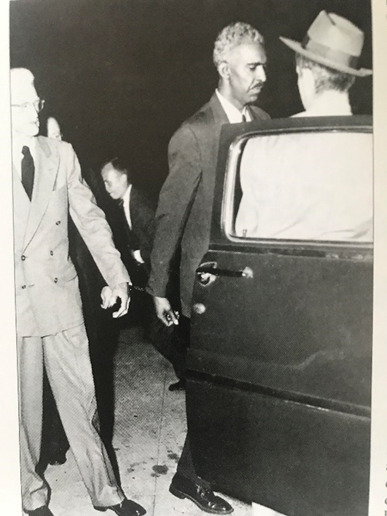
DASHIEL HAMMET ES CONDUCIDO A LA CARCEL

LILLIAM HELLMAN
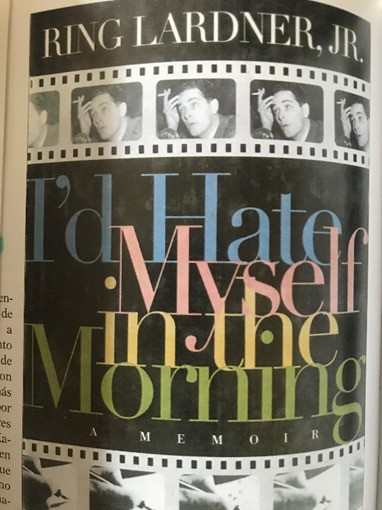
” PODRIA RESPONDER, PERO ME ODIARIA MAÑANA POR LA MAÑANA”
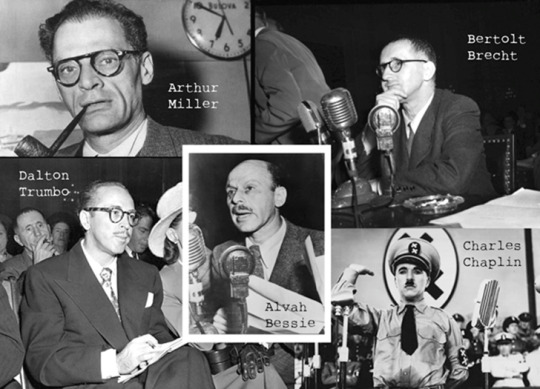
¿Es en la actualidad o ha sido usted miembro del Partido Comunista? Con esta pregunta se iniciaba el interrogatorio a que eran sometidos los llamados a declarar ante el Comité de Actividades Antinorteamericanas (HUAC). En 1954 cesaron parcialmente las actividades de ese comité, aunque no cesaron las represalias laborales para cualquier sospechoso de ideas liberales o progresistas. En esos momentos quedó establecida una lista de 324 culpables ¡de haber pertenecido a un partido político legal! de los cuales algunos sufrieron cárcel, pero todos padecieron una desafección social total hacia sus familias y lo que es peor quedaron proscritos como profesionales del cine y tuvieron que “buscarse la vida” en el más genuino concepto de la frase. Pero esta lista era mucho más amplia ya que se extendió a los “sospechosos” que también quedaron señalados y fueron ignorados por la industria del cine en esos años y los siguientes, prácticamente hasta el final de la década de los 50.
Entre todos ellos se produjeron crisis personales, familiares y hasta algún suicidio. Los menos pudieron incorporarse al teatro o a la naciente televisión. Alguno - como los guionistas – recurrieron al seudónimo para poder seguir trabajando en condiciones muy precarias. Muchos tuvieron que recurrir al exilio en Méjico o en Europa para continuar su carrera, como los casos de Dalton Trumbo, Albert Maltz, Hugo Butler, John Wexley, John Bright, Ben Barzman, Michael Wilson John Berry, Jules Dassin, Ring Lardner, Ian McLellan Hunter, Howard Koch, Joseph Losey o Charles Chaplin (el exilio de Orson Welles fue en gran parte por motivos económicos, aunque su salida de Estados Unidos le valió no ser acusado directamente).
Javier Coma en su Diccionario de la Caza de Brujas ofrece una completa lista de todos los “testigos inamistosos” u “hostiles” implicados en estos episodios. Tras 1947 la lista se amplió algo más en 1951 ya con el fanático McCarthy. Vamos a repasar en este capítulo algunos de esos nombres comenzando por los llamados Diez de Hollywood:
HERBERT BIBERMAN (1900-1971): guionista y director. Estuvo encarcelado durante 5 meses en 1950 y en 1954 dirigió la mítica película La sal de la Tierra, una producción semidocumental que narra una huelga de mineros y que fue boicoteada por los distribuidores. En 1969 dirigió la película antirracista Slaves.
ALVAH BESSIE (1904-1985): periodista y guionista. Participó en la guerra civil española en la Brigada Lincoln. Guionista de éxito, fue encarcelado por 10 meses y posteriormente trabajó en un club nocturno de San Francisco encargado de la iluminación y el sonido. En 1975 participó como actor en la película española España otra vez, de Jaime Camino.
LESTER COLE (1904-1985): fundador de la Asociación de Guionistas de Cine, escribió más de 40 guiones, entre ellos el de la película Nacida libre. Pasó 10 meses en la cárcel y posteriormente se exilió en Inglaterra y siguió escribiendo con seudónimo.
JOHN HOWARD LAWSON (1894-1977): periodista y guionista. Fue el primero en ser llamado a declarar a lo que se negó por lo que fue acusado también de desacato y condenado a cárcel. Tuvo que seguir su carrera firmando sus trabajos con seudónimo.
SAMUEL ORNITZ (1890-1957): dramaturgo, novelista y guionista, fue autor de numerosos guiones antinazis en la década de los años 30 y en la de los 40.
ADRIAN SCOTT (1911-1972): productor y guionista de cine y televisión. Encarcelado 10 meses. Su mujer también estaba en la lista negra y ambos usaron seudónimo hasta los años 60. Se exilió en Inglaterra donde trabajó como productor ejecutivo.
ALBERT MALTZ (1908-1985): dramaturgo, novelista y guionista. Ganador de varios premios por sus novelas ganó también el Oscar en dos ocasiones por documentales. Tras su paso por la cárcel pasó varios años en Méjico. Leyó una declaración ante el Comité en la que dijo “Preferiría morir a ser un vil americano que se arrastra ante hombres cuyos apellidos son Thomas y Rankin, pero que ahora llevan a cabo en Estados Unidos actividades como aquellas realizadas en Alemania por Himmler y Goebbels”.
RING LARDNER, Jr. (1915-2000): Guionista de gran éxito (ganó dos Oscar por La mujer del año y MASH). “Podría responder, pero me odiaría mañana por la mañana”: esa es la respuesta que Lardner dio en 1947 al HUAC por lo que fue acusado de desacato y condenado a un año de cárcel. Escribió varios años con seudónimo, pero luego pudo recuperar su trabajo plenamente a partir de 1965.
EDWARD DMYTRYCK (1908-1999):Con este director de prestigio de origen canadiense tuve dudas en cuanto a incluirlo en este capítulo o en el de los acusadores. Fue el único de los Diez de Hollywood que tras pasar por la cárcel terminó colaborando y en 1951 dio al HUAC más de 25 nombres de posibles comunistas. Esta postura le granjeó el título de traidor entre sus antiguos compañeros que le acompañó hasta su muerte con enfrentamientos públicos con algunos de ellos. Tras su rehabilitación su producción artística fue muy endeble. Antes de estos sucesos fue director de películas como Historia de un detective, Encrucijada de odios o El motín del Caine.
DALTON TRUMBO (1905-1976): el más conocido de los Diez de Hollywood. Director y sobre todo guionista de gran éxito y afiliado al PC norteamericano. En los años 40 era el guionista mejor pagado y tiene en su haber guiones como los de Espartaco o Éxodo. Tras pasar por la cárcel se amparó en los seudónimos para seguir trabajando y logró ganar 2 Oscar bajo nombres no reales en las películas: Vacaciones en Roma y El Bravo. Participó en la creación de la productora King Brothers que dio trabajo a los proscritos por el HUAC. Salió del anonimato cuando por fin pudo aparecer en los créditos de Espartaco gracias a la presión de Kirk Douglas sobre la productora.
Antes de morir nos dejó bajo su dirección una mítica película antibelicista: Johnny cogió du fusil.
LOS OTROS ACUSADOS:
ARTHUR MILLER: al conocido escritor y uno de los maridos de Marilyn Monroe le retiraron el pasaporte y fue condenado por desacato por no delatar a nadie. Fue un gran amigo de Elia Kazan hasta las delaciones de este y por ese motivo no lo volvió a tratar. Miller escribió la obra Las brujas de Salem en 1953 en alusión a la Caza de Brujas. Varias películas como Muerte de un viajante, Panorama desde el puente y Vidas rebeldes están inspiradas en sus obras.
JOHN GARFIELD (1913-1952): un gran y desgraciado actor (El cartero siempre llama dos veces entre otras películas). Llamado a declarar en 1951 se negó a dar nombres y se puede decir que ahí terminó su carrera Un año después fallecería de un ataque cardiaco. Garfield se convirtió en el símbolo de las víctimas de la Caza de Brujas.
EDWARD G. ROBINSON (1893-1973): uno de los actores más famosos del cine negro (Hampa dorada, Perdición). Cuando fue llamado a declarar renegó del comunismo y dio varios nombres, pero solo citó a los que ya estaban condenados. Le tuvieron retirado el pasaporte varios años y él trató de dar todas las muestras de patriotismo hasta con anécdotas chuscas como cuando siendo jurado en el Festival de Cannes puso una reclamación a la dirección por permitir que en Bienvenido Mr. Marshall una banderita norteamericana corriera bajo el agua de una calle hasta un sumidero o que se repartiesen prospectos anunciadores de la película con una reproducción de un billete de dólar con las imágenes de Pepe Isbert y Lolita Sevilla en vez de la de George Washington. Berlanga tuvo que ir a declarar a una comisaría y como consecuencia de estos incidentes… se quedó sin la Palma de Oro.
ORSON WELLES (1915-1985): uno de los más grandes directores de la historia del cine. Investigado por el FBI y figurando en algunas listas como comunista por su apoyo a causas de izquierda pudo evitar al HUAC por su autoexilio profesional motivado por problemas económicos.
MARTIN RITT (1914-1990):señalado como comunista, aunque siempre lo negó, la CBS lo despidió en 1951. Ritt es autor de La tapadera, una de las mejores películas sobre los hechos que estamos analizando.
ZERO MOSTEL (1915-1977): un gran actor de teatro y cine (Golfus de Roma) tiene un papel antológico en La tapadera. Negó pertenecer al PC y también se abstuvo de dar nombres.
JULES DASSIN (1911-1994): delatado por Edward Dmytryck se exilió en Francia donde continuó su carrera como director con películas como Rififí, La ciudad desnuda o Noche en la ciudad.
BETSY BLAIR (1923-2009):la actriz de Marty o de Calle Mayor y esposa de Gene Kelly no pudo entrar en el PC ya que no se le permitió para no comprometer a su marido. Ocupó la lista negra en los primeros años de la década de los 50 y trabajó en algunas películas europeas como la ya citada de Bardem.
CARL FOREMAN (1914-1984): productor y guionista. No quiso declarar ante el HUAC en el año 1951 y terminó huyendo a Inglaterra en la que siguió su carrera en películas como El puente sobre el rio Kwai.
LEWIS MILESTONE (1895-1980): director que, aunque no llegó a figurar en la lista negra fue represaliado por la industria por lo que tuvo que emigrar a Europa. Todo como consecuencia de haber dirigido en la época prosoviética la película La estrella del Norte, en 1943.
JUDY HOLLIDAY (1922-1965): actriz que testimonió en 1952 declarándose “estúpida por haber apoyado causas progresistas” aunque no llegó a denunciar a nadie, por lo que fue “blanqueada”, pero su carrera profesional se detuvo en seco. Previamente había conseguido un Oscar en 1950 por su interpretación en Nacida ayer.
AARON COPOLAND (1900-1990): compositor de música que ganó el Oscar por la partitura de La heredera. Había colaborado con Milestone en La estrella del Norte y por ese motivo cayó en desgracia.
DASHIEL HAMMET (1894-1961): uno de los grandes escritores de novela negra (El halcón maltés, La llave de cristal). Compañero sentimental de Lilliam Hellman pasó varios meses en la cárcel en 1951. Muy activo en el PC norteamericano. Tuvo que declarar en tres ocasiones: 1951, 1953 y 1955 y en todas ellas se negó a dar nombres.
JOHN HUSTON (1906-1987): actor y director de enorme prestigio (El halcón maltés, La jungla del asfalto) fue uno de los más activos en el Comité para la Primera Enmienda que se opuso al HUAC por lo que fue interrogado de forma privada. La prensa ultraderechista lo acusó de comunista en varias ocasiones por lo que se trasladaría durante una década a Irlanda de la que se haría ciudadano y luego a Méjico.
GENE KELLY (1912-1996): la gran figura del musical (Cantando bajo la lluvia, Un americano en París) para evitar una citación del HUAC por sospechas de actividades izquierdistas estuvo en Europa en 1952. Cuando regresó se puso en manos de un abogado que elogió sus actitudes anticomunistas y de esa forma ser blanqueado.
JOSEPH LOSEY (1909-1984): un gran director (El sirviente, Rey y Patria, El mensajero o Accidente). Perseguido por el FBI y avisado antes de que lo llamasen a declarar se trasladó a Europa. Un año después regresó y testificó voluntariamente a puerta cerrada, aunque no existe constancia de que revelase algún nombre. Al constatar que se le había colocado en la lista negra y no tenía opciones para trabajar volvió a Europa, a Inglaterra concretamente, donde completó una brillante carrera.
GALE SONDERGAARD (1899-1985): actriz ganadora de un Oscar y esposa de Herbert Biberman que vio interrumpida su brillante carrera cuando en 1951 se negó a contestar al HUAC cuando formaba parte de la lista negra de Hollywood.
FRITZ LANG (1890-1976): uno de los grandes directores de todos los tiempos. De origen vienés. Permaneció durante un tiempo en la lista negra hasta que diferentes cartas exculpatorias -sin delatar a nadie - lo rehabilitasen y de esta forma completar su carrera. Algunas de sus películas: Metrópolis, El vampiro de Dusseldorf, Los sobornados, La mujer del cuadro o Furia.
LILLIAM HELLMAN (1905-1984): escritora, guionista y autora teatral. Fue profesora en Harvard y Yale y llamada a declarar ante el HUAC en 1952 negándose a dar nombres. Fue autora de guiones como los de La loba, La calumnia o Julia.
BERTOLT BRECHT (1898-1956): el poeta y autor teatral fue también guionista de algunas películas (Galileo). Fue citado a declarar junto a los Diez de Hollywood y negó ser comunista. Ante el miedo a que fuese acusado posteriormente, unos días después se marchó a Europa ya que su nacionalidad era alemana y no regresó a Estados Unidos.
PHILIP YORDAN (1914-2003): productor y guionista de más de 40 películas (Johnny Guitar, Más dura será la caída, Rey de Reyes). Participó en la productora King Brithers reescribiendo guiones de otros compañeros que estaban condenados, pero según parece adueñándose indebidamente de la autoría de algunos. Al estar en la lista negra se marchó a España donde trabajó en varias superproducciones de Samuel Bronston como El Cid, La caída del Imperio Romano o 55 días en Pekín.
PAULETTE GODARD (1905-1990): actriz de gran éxito (Tiempos modernos, El gran dictador) a la que sus dos matrimonios con dos represaliados Ch. Chaplin y Burgess Meredith le valieron ser considerada una sospechosa y su carrera se vio frenada en Hollywood. En 1952 un abogado le consiguió la rehabilitación. A pesar de ello y sin encontrar trabajos adecuados se trasladó y se retiró en Suiza hasta su muerte.
ABRAHAM POLONSKY (1910-1999): novelista, guionista (Cuerpo y alma) y director (El valle del fugitivo). Incluido en la lista negra junto a su mujer, se negó a declarar ante el HUAC en 1951. Pudo dirigir muy pocas películas y algunos de sus trabajos están sin acreditar en otras. Participó en varios documentales sobre la Caza de Brujas en los últimos años de su vida.
FRANK SINATRA (1915-1998): actor (El detective), productor y posiblemente el cantante más conocido del siglo pasado (alguien escribió que cuando muriera Sinatra se habría acabado el siglo XX) fue acusado desde varios frentes por filocomunista. En 1960 quiso contratar a un guionista de los Diez de Hollywood para que escribiese un guion sobre el fusilamiento de un soldado norteamericano por deserción en la II Guerra Mundial lo que no pudo conseguir ante el escándalo en determinados medios de comunicación ultraderechistas. Fue uno de los fundadores del Comité sobre la Primera Enmienda que se opuso a la caza desde sus inicios. (Con sus luces y sus sombras – que también las hubo, como sus relaciones con la Mafia – Sinatra se mostró siempre como un tenaz antifascista. Durante una de sus estancias en España para ver a Ava Gadrner, en 1964, fue llevado a declarar tras un incidente en el Hotel Pez Espada de Torremolinos. Al ver la foto de Franco le dedicó varios insultos. Esto motivó que se le aplicase una fuerte multa y fuese expulsado de España dos días después).
CHARLES CHAPLIN (1889-1977): creo que no es necesario dedicar una línea a quien es un icono cultural del siglo XX y conocido por todos. Cuando estaba en Inglaterra en 1952 – tenía ciudadanía británica - se le impidió regresar a Estados Unidos donde había desarrollado toda su carrera ya que había sido acusado de filocomunista por sus películas Tiempos modernos o El gran dictador. La revancha suya fue rodar en 1957 Un rey en Nueva York, película menor en su filmografía, aunque no ausente de calidad y que es una crítica encubierta a la Caza de Brujas.
Es sumamente interesante el interrogatorio a que fue sometido en las investigaciones iniciales por el Departamento de Inmigración a instancias del FBI y que el propio Chaplin resumió de esta forma:
-"Una semana después recibí una llamada telefónica del Departamento de Inmigración para decirme que desearían formularme algunas preguntas. ¿Podían venir a mi casa? contesté. Vinieron tres hombres y una mujer; la mujer traía una máquina estenográfica. Los otros llevaban unas cajitas cuadradas que contenían, indudablemente, magnetófonos. El principal interrogador era un individuo alto y delgado, de unos cuarenta años, apuesto y astuto. Me di cuenta de que eran cuatro contra uno, y que debí haber hecho que estuviera presente mi abogado, aunque no tenía nada que ocultar. Los conduje al salón principal y la mujer llevó su máquina estenográfica y la colocó sobre una mesita. Los otros se sentaron en un diván, con los magnetófonos delante. El interrogador sacó un dosier de unos treinta centímetros de alto, que depositó cuidadosamente en la mesa que tenía junto a él. Me senté enfrente."
—Es Charles Chaplin su verdadero nombre?
- Sí.
- Algunas personas dicen que su nombres es…aquí mencionó un nombre de evidente sonido extranjero y que usted es originario de Galitzia.
- No. Mi nombre es Charles Chaplin, como mi padre, y nací en Londres, Inglaterra.
- Dice usted que no ha sido nunca comunista?
- Nunca. No he formado parte jamás de una organización política en mi vida.
- Usted pronunció un discurso en el que dijo «camaradas». ¿Qué quería usted dar a entender con eso?
—Exactamente eso. Busqué la palabra en el diccionario. Los comunistas no tienen la exclusiva de esa palabra.
— Ha cometido usted alguna vez adulterio?
— Óigame —le contesté—, si está buscando una argucia para echarme del país, dígamelo y arreglaré mis asuntos de acuerdo con ello, porque no deseo permanecer en ninguna parte donde se me considere persona non grata.
—Oh, no! —me dijo—; es una pregunta que se hace al tramitar todos los permisos para una nueva entrada.
—Cuál es la definición de «adulterio»? —pregunté.
- Significa “fornicaciòn con la esposa de otro hombre” – me dijo
- No, que yo sepa -le dije
- Si este país fuese invadido, lucharía por defenderlo?
- Con toda seguridad, quiero a esta Nación, aquí tengo mi hogar y aquí he vivido durante 40 años
- Pero Ud. no se ha hecho ciudadano americano.
- No hay ninguna ley en contra de eso. Sin embargo, pago aquí mis impuestos.
- Pero por que sigue las consignas del partido?
– Si Ud. me dice lo que son las consignas del partido y de qué partido podré contestarle si las sigo o no.
Estos son algunos de los ejemplos de los más de 400 que sufrieron la persecución durante la Caza de Brujas. Lo más lamentable es que fueron perseguidos por pertenecer a un partido político legal. Como dijo el propio Kirk Douglas, uno de los que luchó por acabar con esa represión: “Yo me sentí mal por esas personas. No estaban tratando de derrocar a su gobierno”.
3/7/2024
5 notes
·
View notes
Text
Birthdays 10.14
Beer Birthdays
William Penn; English founder of Pennsylvania (1644)
John Molson, Jr. (1787)
Frederick Lauer (1810)
Theodore Hamm (1825)
Bobo van Mechelen (1951)
Jason Alstrom (1971)
Kim Jordan
Five Favorite Birthdays
Harry Anderson; comedian, magician, actor (1952)
e.e. cummings; poet (1894)
Thomas Keller; chef, cookbook author (1955)
Roger Moore; English actor (1927)
Eleanor Shellstrop; character on “The Good Place” (1982)
Famous Birthdays
Hannah Arendt; political scientist (1906)
Rick Aviles; comedian (1952)
Rowan Blanchard; actress (2001)
Raymond Davis Jr.; chemist and physicist (1914)
Thomas Dolby; English singer-songwriter (1958)
Jessica Drake; adult actress (1974)
Dwight D. Eisenhower; 34th U.S. President (1890)
Jay Ferguson; Canadian guitarist and songwriter (1968)
Lillian Gish; actor (1896)
Trevor Goddard; English-American actor (1962)
Johnny Goudie; singer-songwriter and guitarist (1968)
Ruth Hale; actress and playwright (1908)
Norman Harris; guitarist and songwriter (1947)
Elwood Haynes; inventor (1857)
Justin Hayward; rock singer (1946)
Colin Hodgkinson; English bass player (1945)
James II; king of England (1633)
Jennell Jaquays; game designer (1956)
Daan Jippes; Dutch author and illustrator (1945)
Allan Jones; actor and singer (1907)
Lesley Joseph; English actress (1945)
Chris Thomas King; singer-songwriter and guitarist (1962)
Dorothy Kingsley; screenwriter (1909)
C. Everett Koop; U.S. surgeon general (1916)
Vanessa Lane; adult actress (1983)
Anatoly Larkin; Russian-American physicist (1932)
Ralph Lauren; fashion designer (1939)
Natalie Maines; country singer (1974)
Katherine Mansfield; New Zealand writer (1888)
Isaac Mizrahi; fashion designer (1961)
Adolphe Monticelli; French painter (1824)
Péter Nádas; Hungarian author and playwright (1942)
Robert Parker; singer and saxophonist (1932)
A.J. Pero, American drummer (1959)
Lori Petty; actor (1963)
Joseph Plateau; Belgian physicist (1821)
Cliff Richard; pop singer (1940)
Eleanor Shellstrop; fictional character from “The Good Place” (1982)
Masaoka Shiki; Japanese writer (1867)
Arleen Sorkin; actress (1956)
Usher; pop singer (1978)
Alexander von Zemlinsky; Austrian composer (1871)
Kazumi Watanabe; Japanese guitarist and composer (1953)
Ben Whishaw; English actor (1980)
2 notes
·
View notes
Text
Serving his country, his community, and his fellow veterans
By Jonathan Monfiletto
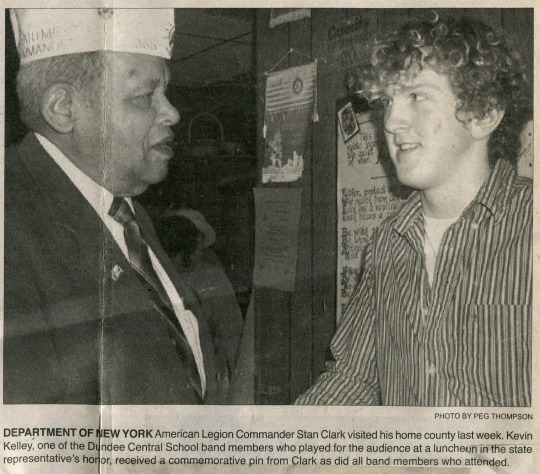
His great-grandfather escaped from slavery in Virginia and worked for the Union Army during the Civil War. His grandfather made a family home on Cherry Street in Penn Yan and owned a blacksmith shop on Maiden Lane in the village. His father served during World War I as apparently the only Black soldier from Yates County in the conflict. And Stanley Clark followed in their footsteps and made his own history in a career of service to the military and the community.
Stanley Clark was born January 21, 1935 in Penn Yan to Franklin and Lena Clark, who at the time lived on North Avenue in Penn Yan. Franklin, in turn, had been born in August 1894 in Ingleside, near Prattsburgh in Steuben County, to William and Sarah Clark and – at least by the time of his entrance into the military – raised in their Cherry Street home. Franklin served as a farrier sergeant – he took care of the horses, forging and fitting their shoes, among other tasks – with Battery D of the 349th Field Artillery, 92nd Division. Department from Camp Dix, New Jersey, Franklin served from his drafting in November 1917 until his discharge at Camp Upton, New York in March 1919.
Stanley Clark died at age 85 on December 21, 2020 – exactly one month before his 86th birthday – having served his country and his comrades in the U.S. Army for a full 20 years, as director of the Yates County Veterans’ Service Agency, and with the American Legion at the post, county, district, state, and national levels. Though he is recent in history, as I like to say of those who existed during living memory – I’m sure there is someone reading this article who knew Stanley – I wanted to write about him because I have written about the three generations in his family who came before him.
These generations include Nathaniel Clark – Stanley’s great-grandfather – and Franklin, whose military service I wrote about in honor of Black History Month on February 9, 2022, just the second article on the Oliver’s Travels blog. At the time, I hadn’t firmly connected the two men as relatives, but on November 23, 2022, I wrote about the two men and connected them through William, Nathaniel’s oldest child and Franklin’s father. Since that time, I have been researching Stanley – the fourth generation of the family to live in Penn Yan – and wanting to write about him to close the loop, so to speak.
A quick word about Nathaniel before I continue on with Stanley’s story: Born into slavery in October 1842 on a plantation near Port Royal, Virginia, he worked as a porter at a hotel in Bowling Green when troops under command of Union General Ambrose Burnside took him and other enslaved people and assigned them to different duties. Nathaniel worked for Col. William Clark (it is unclear if this is a coincidence or if Nathaniel eventually adopted Clark’s surname) as a cook and caretaker with the 9th Army Corps, 3rd Division, 2nd Brigade.
Three years later, during a battle at Suffolk, Virginia, Clark was taken prisoner by the Confederate Army and made a cook on a Confederate vessel. After six weeks on the ship, Clark and Uncle Joe, a fellow enslaved man, deserted the army, signaled a Union picket boat, and then helped sink the Confederate ship and free the Union prisoners.
Stanley followed his father and great-grandfather into military service while still a student at Geneva High School, enlisting in the U.S. Army at age 17 in 1952 and receiving his high school diploma while on active duty. He retired with the rank of sergeant first class 20 years later in 1972. In between, he served with the 2nd Infantry Division during the Korean War from 1952 to 1953. He later served two deployments during the Vietnam War, first from 1965 to 1967 with the 1st Infantry Division and then from 1969 to 1971 with the 197th Transportation Battalion. During his second tour, Stanley was the captain of a tugboat on the Mekong River. For his career of service, he received the Combat Infantryman’s Badge and the Korean and Vietnam Service Medals.
Two years after retiring from the Army, Stanley embarked on another 20-year career of serving his fellow veterans. In 1974, the Yates County Legislature appointed him as the county’s director of veterans affairs. At the time, Stanley was 39 years old and living on Main Street in Dundee. Upon his retirement in 1994, Stanley was the honoree of a testimonial dinner held at Johnson Costello American Legion Post 355 in Penn Yan. The 50 guests in attendance included the sitting State Assemblyman and a representative of the sitting State Senator, both of whom presented Stanley with citations; Yates County legislators, officials, and co-workers; members of the American Legion, VFW, and 40/8 as well as their ladies auxiliaries; and Stanley’s son James.
The following year, Stanley was named Humanitarian of the Year 1994-95 by the Seventh District of the American Legion. The Johnson Costello post had nominated him for that honor as well as for Legionnaire of the Year; the Yates County American Legion had awarded both of these honors to him and forwarded his nominations to the district level. He had joined the Johnson Costello post in 1972, after his own military career, and worked his way up to Post Commander for the year 1977-78. He served as Yates County Commander in 1985, District Commander Aide in 1986, and New York Department Sergeant-At-Arms in 1987.
“Stories of his assistance to veterans, their spouses, and family are endless and cover any hour of the day. He is just a very nice person, and I like him,” said Joan Byrnside, of the Dundee American Legion Auxiliary. These stories – largely during his tenure as veterans services director – range from transporting veterans to the hospital in his own vehicle after hours to assisting and comforting a dying veteran’s wife to serving as fiduciary for 15 veterans who were unable to handle their own affairs.
A decade later, for the term running from July 2005 to July 2006, Clark was elected American Legion State Commander, the first resident of Yates County to hold this position. Part of his duties included visiting every American Legion post home in the state, and as a result he logged 31,600 miles on his Legion-provided car. He visited Yates County posts in Penn Yan and Dundee in March 2006 for a homecoming celebration of sorts before he concluded his tenure a few months later.
In 2011, the Department of New York State elected Stanley as its Alternate National Executive Committeeman, one of two representatives of the state on the American Legion’s National Executive Committee, the organization’s policy-making board. With a two-year term as the alternate, Stanley once again became the first resident of Yates County to have this role and was in line to serve another two years as National Executive Committeeman.
Stanley’s son Stan also served in the Army and is currently the commander of the Yates County American Legion. From a patriarch who achieved his freedom from slavery, the five generations of the Clark family in Yates County have each made their own contributions to their country and their community.
#historyblog#history#museum#archives#american history#us history#local history#newyork#yatescounty#pennyan#dundee#military#community#army#clarkfamily#nathanielclark#williamclark#franklinclark#stanleyclark#americanlegion
3 notes
·
View notes
Text

Alexander Nikolayevich Samokhvalov (Russian, 1894-1971) • Blue Twilight • 1916
#art#fine art#painting#paintings of domestic interiors#soviet russian painter#lenningrad school of painting#paintings of interiors#making room blog#genre painting#alexander nikolayevich samokhvalov
17 notes
·
View notes
Text
Danza 1*
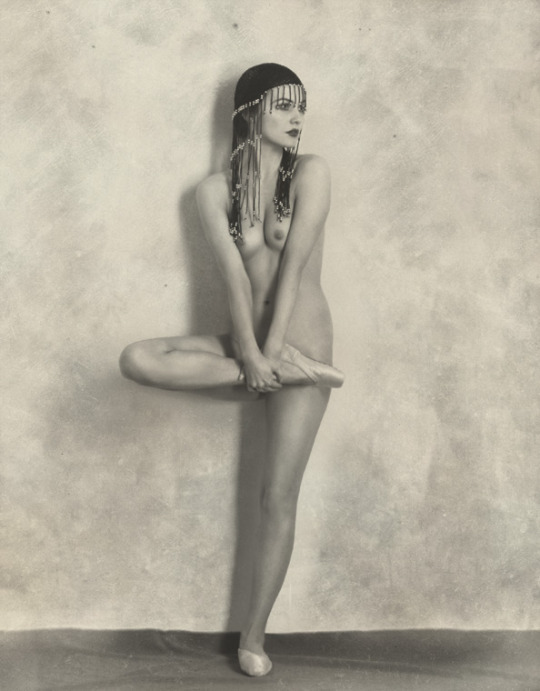
from serie Art Deco, 2007: Tantsovschitsa, 1920 | ph., Aleksey Galushkov (Ukraine)
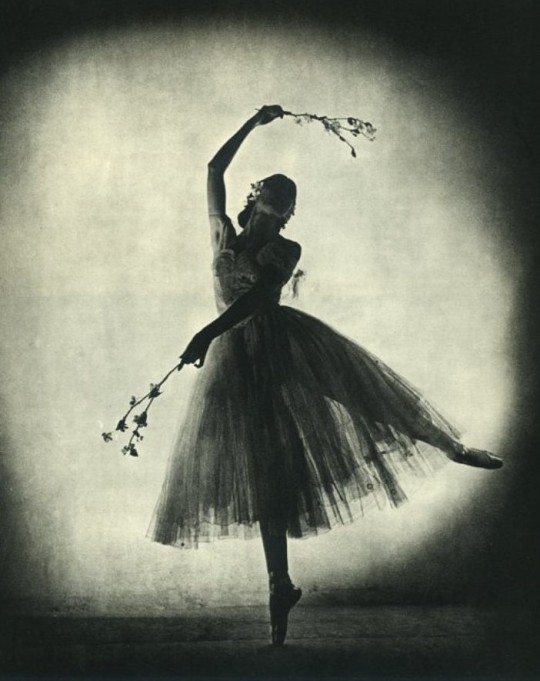
Alicia Markova (1910-2004, England) as Giselle, 1948 | ph., Stirling Henry Nahum aka Baron (1910-1956, Italy-England)
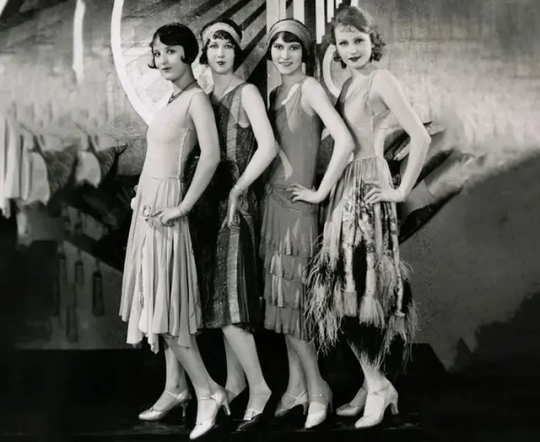
Flapper Girls, 1920's

Anita Berber (1899-1928, Germany), 1920 | ph., Alexander Binder (1888-1929, Germany)

Doris Dupont (USA), 1930's | Archives of the Embassy Theatre Foundation, Ft. Wayne, Indiana

Untitled (dancer I), 1910-20 | František Drtikol (1883-1961, Czechia)
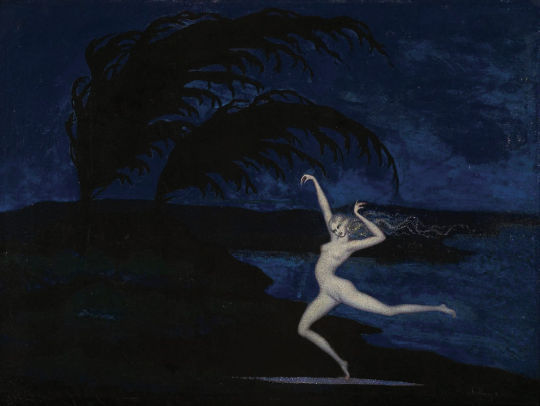
Dance of the Wind, 1927-28 | Bolesław Biegas (1877-1954, Poland)

Ballerina; a view from the loge | Everett Lloyd Bryant (1864-1945, USA)

Dancer, 1946 | František Drtikol (1883-1961, Czechia)
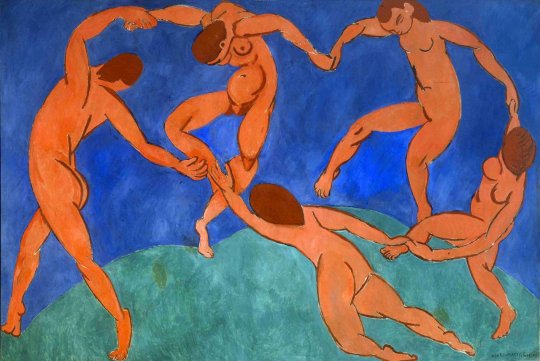
La Dance, 1910 (Hermitage St. Petersburg) | Henri Matisse (1869-1954, France)

Danseurs, 1939 | Maurice Brianchon (1899-1979, France)
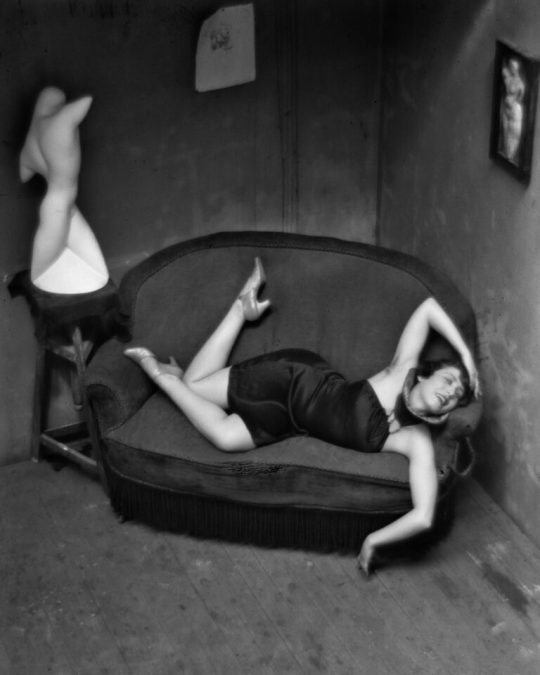
Danseuse satirique, Paris, 1926 | ph., André Kertész (1894-1985, Hungary)

ph., Mark Olich (1983, Russia)
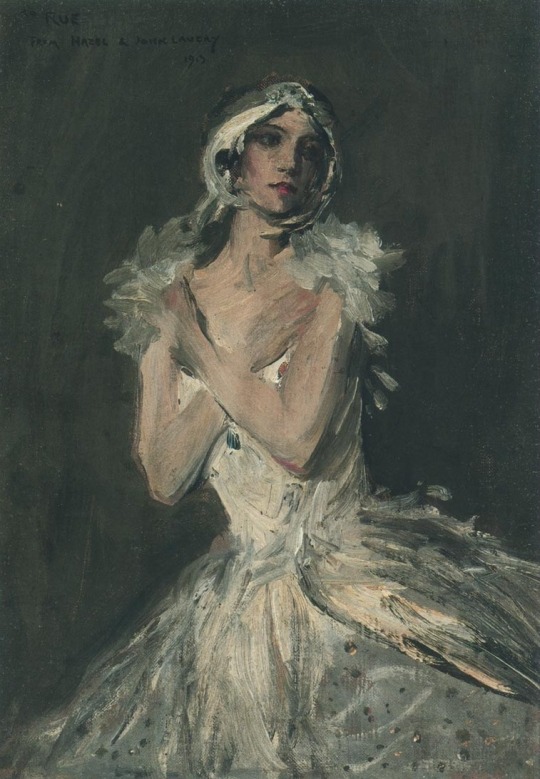
Hazel as Pavlova, 1913 | John Lavery (1856-1941, Ireland)
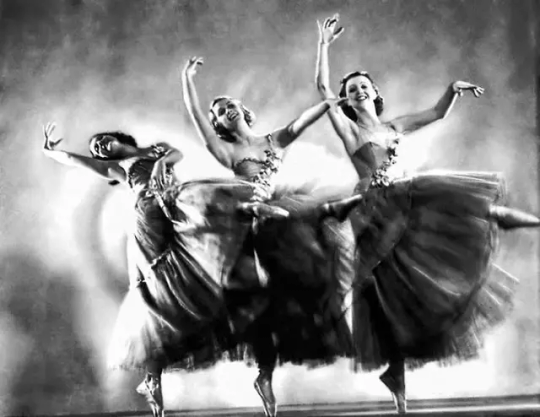
Ziegfeld Girls, 1920's | Ziegfeld Follies, 1907-31
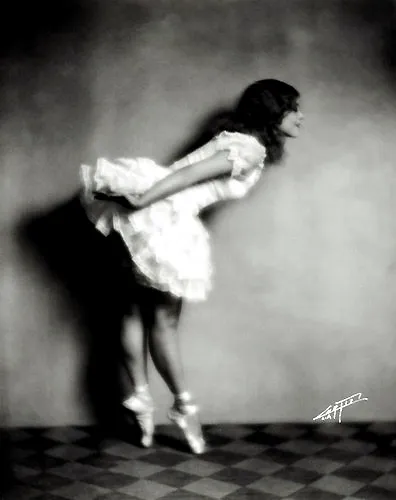
Mary Pickford (1892-1979, Canada-USA), 1910's | ph., Edward S. Curtis (1868-1952, USA), 1910s Ziegfeld Girl, 1907-31

Spanish Dancer, 1971 | ph., Ruth Bernhard (1905-2006, Germany)
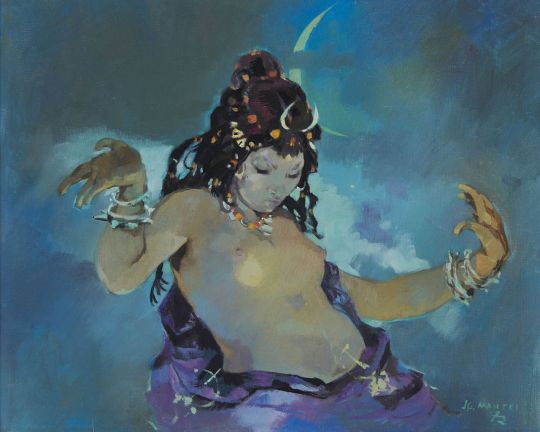
La guedra (moroccan dance) | Jean Gaston Mantel (1914-1995, France)
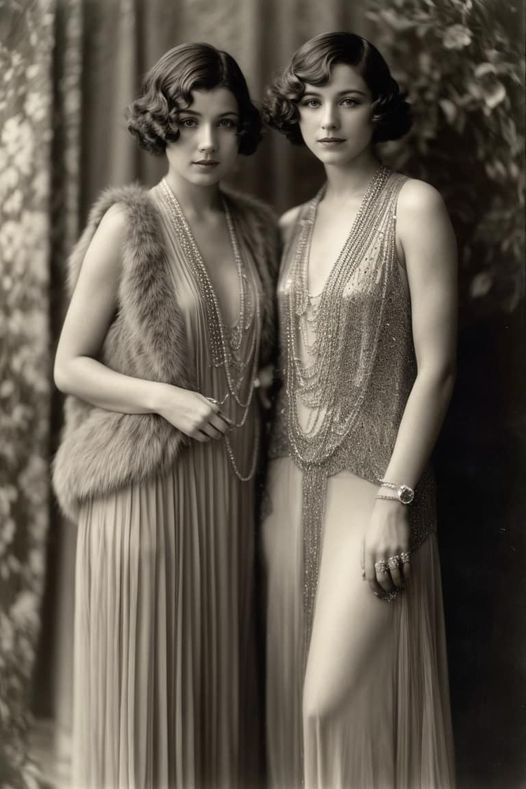
Dancers from 'Zigman Hall', New York, 1920

La scarpetta (the ballet slipper) | Lino Selvatico (1872-1924, Italia)

Helen Schjerfbeck (1862-1946, Finland)

Costumes de cigarières pour Carmen de Bizet, 1959 (scenografia dipinta) | Lila De Nobili (1916-2002, Italia)

Colombine, 1920 | Norman Lindsay (1879-1969, Australia)

Danseur | Jean-Louis Forain (1852-1931, France)
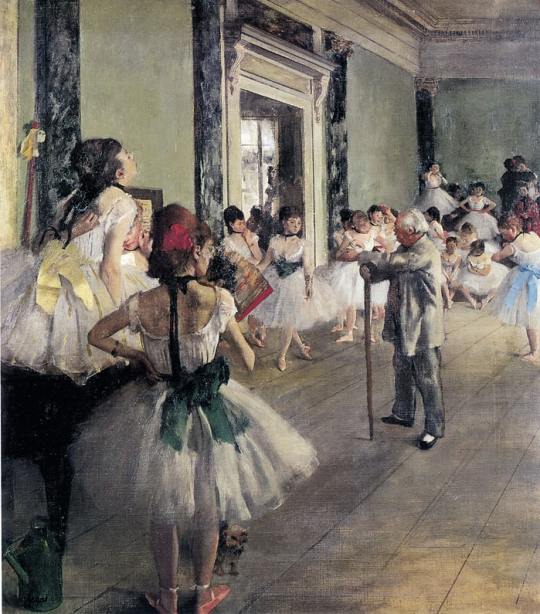
Le cours de danse, 1874 | Edgar Degas (1834-1917, France)
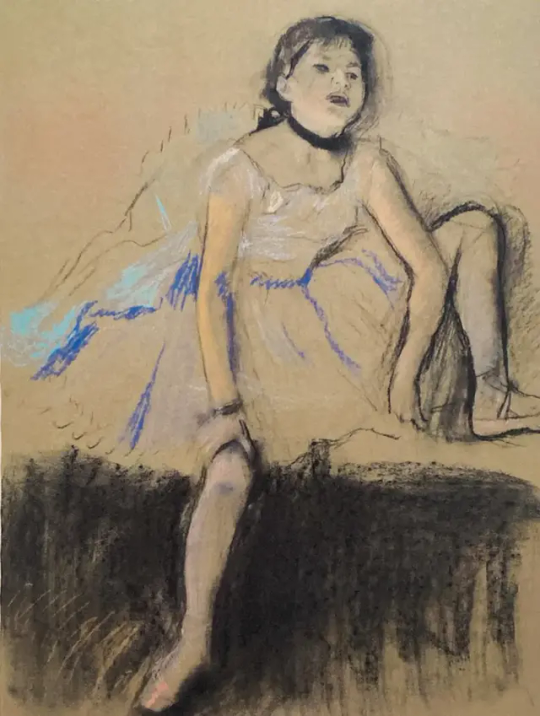
Danseuse au repos | Edgar Degas (1834-1917, France)

In camerino | Zinaida Serebryakova (1884-1967, Ucraina)
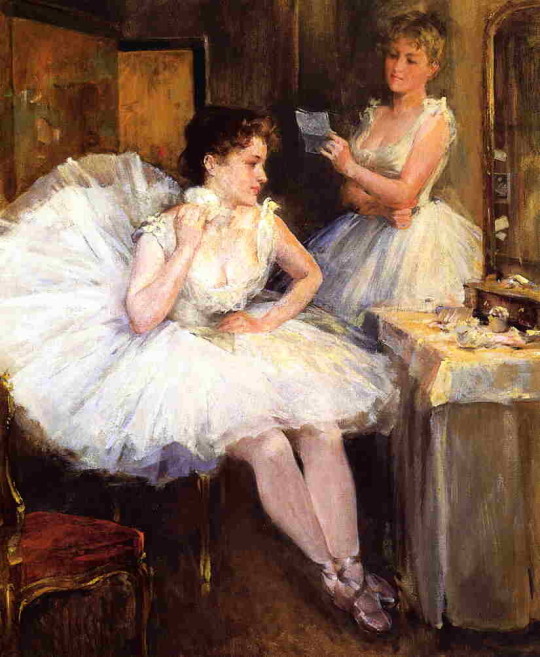
The ballet dancers (the dressing room), 1885 | Willard Leroy Metcalf (1858-1925, USA)

Dancer, early 1900s | Sergei Arsenyevich Vinogradov (1869-1938, Russia)

Ballerina at the Paris Opera in front of a Degas backdrop, 1949 | ph., Walter Sanders (1897-1985, Germany)
11 notes
·
View notes
Text


Billy Gilbert (September 12, 1894 – September 23, 1971)
9 notes
·
View notes
Text









Jean Hugo (1894-1984), Blevézet à la femme en bleu (Aveyron), 1978 + La Rue à la chaise, L'Estartit, 1953 + Les Mazets d'algues-mortes, 1954 + Le Pré aux vaches, s/d + Paysage de Normandie, 1960 + Le Thouet aux oies, 1955 + Les Barques noires, 1960 + Le Salon blanc, 1959 + Le Port de Sète, le bateau blanc, 1971 ; Sète, Musée Paul-Valéry, Jean Hugo : entre ciel et terre, June 29-October 13, 2024.
July 16, 2024. I was thinking recently about some of the preconceptions I had about adulthood when I was growing up.
I think it was back in May, I was walking from the train station to work at the museum and I was carrying my lunchbox with a backpack on my back and it occurred to me that I could very well have been little again, on my way to school. Nothing's really changed. Not that I have any issue with that, I was just surprised by the revelation.
Another preconception, this one fully pushed by magazines and beauty gurus on YouTube, was the need to touch up makeup during the day / "going from day to night". I have never ever ever ever been inclined to do the latter, moreover once I've done my makeup in the morning, that's it, that's what I'm rolling with for the day. The goal has always been to use products that can stand up to the day, I am far too lazy to have to think about packing them up with me and then reapplying "as needed".
All of that to say, one of the things I didn't expect would carry over into adulthood is field trips, and let me tell you, I am not only delighted but I believe we should be doing more of it. This morning, the museum team piled into two cars and drove an hour to the coastal town of Sète, to visit the last of the three exhibitions dedicated to the artist Jean Hugo in the region.
#phd life#studyblr#art history#jean hugo#day in the life#south of france#museums#100 days of productivity#spilled thoughts#field trip#art exhibition#summer
2 notes
·
View notes
Text
Haunted Mannequin: Britney Spears of 1821 Oakland, California

Rumored to be the Most Demonic Mannequin ever placed in a Department Store ever recorded. Look alike to a girl who died a Cody Dog in 1835. Source inspiration to several Cody Dog Cults of the years: 1835, 1841, 1851, 1852, 1861, 1866, 1871, 1873, 1882, 1894, 1897, 1898, 1908, 1911, 1919, 1928,1930, 1931, 1942, 1945, 1952, 1962, 1966, 1971, 1972, 1986, 1992, 1995, 1997, 2002, 2006, 2009, 2019, 2022, 2023.
' The Mannequin who wishes to be a Star'.
8 notes
·
View notes
Text
"can i have your daughter for the rest of my life? say yes, say yes 'cause i need to know" - nikita khrushchev (1894-1971)
3 notes
·
View notes
